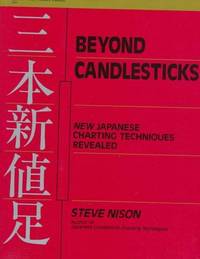


He is a leading authority on candlesticks, the author of two foundational books on the subject, Japanese Candlestick Charting Techniques and Beyond Candlesticks. He was the first to bring Japanese candlestick charting methods to Western trading nearly 20 years ago. The smaller chart time frame you choose, the closer you look into price action.Want to know something about candlestick charting? Steve Nison can tell you. There are many chart time frames to choose from and it is completely up to you to decide which one suits you and your trading style best. The candlestick chart summarises the executed trades during a specific period of time.įor example a 5-minute candle represents 5 minutes of trading data.Ī 4-hour candle represents 4 hours of trading data.ġ-week candle represents 1 week of trading data. However, buyers came in and drove prices back up to end the session back near its open price.

If a Japanese candlestick has a long lower shadow and short upper shadow, this means that sellers flashed their washboard abs and forced the price lower. However, sellers came in and drove prices back down to end the session back near its open price. If a Japanese candlestick has a long upper shadow and short lower shadow, this means that buyers flexed their muscles and bid prices higher. These upper and lower shadows provide important clues about the trading session.Ĭandlesticks with long shadows show that trading action occurred well past the open and close.Ĭandlesticks with short shadows indicate that most of the trading action was confined near the open and close. The candlestick shadows (also known as wicks or tails) are depicted as thin lines on the top and bottom of a candlestick. Short bodies imply very little buying or selling activity. This means that either buyers or sellers were stronger and took control. The longer the body is, the more intense the buying or selling pressure. Long bodies indicate strong buying or selling. Not only the bodies can be different colours, but just like humans, candlesticks have different body sizes. If the price closed lower than it opened, the candlestick would be red. This means that if the price closed higher than it opened, the candlestick would be green. Traders can simply substitute green instead of white, and red instead of black.

If the real body is empty, it means the close was higher than the open.Īnd since everything is better in colour, traders can alter their candlestick colours in their trading platform too.Ī colour telly is much better than a black and white telly, so why not splash some colour on those candlestick charts too, right? When the real body is filled in or black, it means the close was lower than the open. When it comes to Forex trading, there’s nothing naughtier than checking out the bodies of candlesticks!īecause the bodies represent the price range between the open and close of that day’s trading. Long story short, without Steve Nison, candlestick charts would have most likely remained a buried secret.Ī candlestick is composed of three parts the upper shadow, lower shadow and body. By the ‘90s, traders all over the world had heard of the candlestick chart. Slowly, this secret technique was not so much a secret anymore. Steve researched, studied, lived, breathed, ate candlesticks, and began to write about how it could be used in the Forex markets. One beautiful day in 1870, a fella from a country in the far West called Steve Nison came across a secret technique called “Japanese candlesticks” by a Japanese rice merchant.
#Steve nison candlestick course too expensive free#
Free Save my progress History of Japanese Candlestick Chartsīack in the old days when Godzilla was still a cute little lizard, the Japanese created their own version of technical analysis to trade rice.


 0 kommentar(er)
0 kommentar(er)
